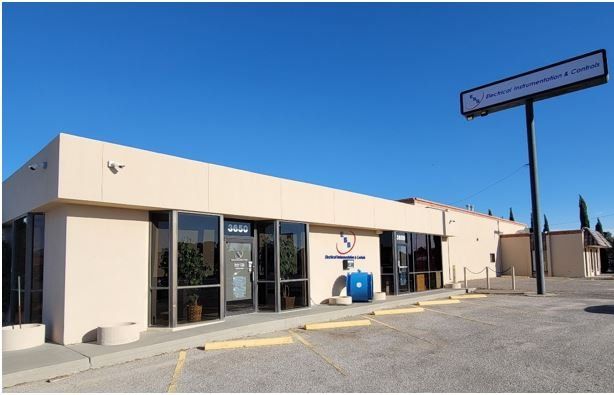Blog
Our Blog
The Electric Supply Source blog offers a rich array of content tailored for professionals and enthusiasts in industrial technology and automation. Visitors can expect expert insights on emerging industry trends, comprehensive tutorials on topics like Programmable Logic Controllers (PLCs), and detailed analyses of cutting-edge technologies. With a focus on practical applications, innovations, and expert perspectives, the blog ensures readers stay informed and empowered to leverage modern solutions for industrial efficiency and success.

By Alex Sanchez
•
February 21, 2025
Comparing PLC Types and Their Ideal Applications Programmable Logic Controllers (PLCs) come in a variety of forms, each designed to meet the diverse needs of industries worldwide. Whether you're automating a small machine or managing a sprawling industrial plant, selecting the right type of PLC is critical to achieving optimal performance. In this article, we delve into the two primary categories of PLCs—compact and modular—exploring their features, applications, and how Electric Supply Source (ESS) helps businesses integrate the best solutions tailored to their specific needs. Compact PLCs: All-in-One Solutions Compact PLCs, also known as fixed PLCs, are self-contained units where all components—including the CPU, power supply, and I/O modules—are housed in a single enclosure. These PLCs are designed for smaller-scale applications where simplicity and cost-effectiveness are paramount. Key Features: Integrated Design: Combines all necessary components into one unit, making installation straightforward. Cost-Effective: Ideal for small projects with limited budgets. Space-Saving: Compact size makes them suitable for tight spaces. Ease of Use: Simplifies setup and maintenance. Applications: Small machinery automation, such as packaging machines. Building management systems for lighting and HVAC control. Standalone systems in industries like food processing and pharmaceuticals. ESS Expertise: As a trusted PLC integrator, ESS ensures seamless installation and optimization of compact PLCs for clients requiring efficient, small-scale automation solutions. Modular PLCs: Flexibility and Scalability Modular PLCs offer a more customizable approach, with separate modules for the CPU, power supply, and I/O. These PLCs are designed to adapt and expand as industrial needs evolve, making them ideal for large, complex systems. Key Features: Customizable Design: Allows users to select specific modules based on their application requirements. Scalability: Easily add I/O modules or upgrade the CPU to meet growing demands. High Processing Power: Suited for complex automation tasks. Advanced Communication: Supports multiple protocols for seamless integration with other systems. Applications: Large-scale manufacturing plants with intricate automation needs. Process control systems in oil and gas industries. Utilities requiring extensive data acquisition and remote monitoring. ESS Expertise: ESS specializes in designing and integrating modular PLC systems, offering clients the flexibility to adapt to future challenges without overhauling their entire setup. Compact vs. Modular PLCs: A Side-by-Side Comparison Choosing the Right PLC for Your Needs Selecting the right type of PLC depends on various factors, including: Scale of the Application: For small, standalone systems, compact PLCs are ideal. For larger, complex operations, modular PLCs provide the necessary flexibility. Budget Constraints: Compact PLCs are more cost-effective upfront. Modular PLCs may require a higher initial investment but offer long-term value through scalability. Future Requirements: Modular PLCs allow for easy expansion, making them better suited for growing businesses. ESS’s Role: Electric Supply Source provides expert consultation to help clients evaluate their specific needs and choose the most suitable PLC solution, ensuring optimal performance and cost-efficiency. Applications of Compact and Modular PLCs in Action At Electric Supply Source , we’ve successfully implemented both compact and modular PLC systems for clients across various industries: Compact PLCs: Streamlined automation for small packaging lines, reducing downtime and increasing output efficiency. Modular PLCs: Comprehensive solutions for large oil refineries, integrating advanced SCADA systems for real-time monitoring and control. Advantages of Partnering with ESS for PLC Integration Tailored Solutions: We evaluate your unique requirements to recommend the ideal PLC type. Seamless Integration: Our team ensures smooth installation and configuration. Scalable Designs: Modular PLC systems that grow with your business. Expert Support: Ongoing maintenance and troubleshooting services. ESS’s Expertise in PLC Integration At Electric Supply Source , we provide end-to-end PLC solutions: Custom Design and Programming: Ensuring systems are built to meet unique operational demands. SCADA Integration : Allowing operators to manage and monitor systems with ease. Maintenance and Support: Providing ongoing service to ensure long-term system performance. Other References "Components of PLC" – Instrumentation Tools This resource provides an in-depth look at the various modules that constitute a PLC, including the power supply, CPU, and I/O modules. Instrumentation Tools "Programmable Logic Controllers (PLCs): Basics, Types & Applications" – Electrical4U This article offers a comprehensive overview of PLCs, detailing their basic components, functionalities, and applications in industrial settings. Electrical4U "What Is a PLC? An Introduction to Programmable Logic Controllers" – Control.com This piece introduces the fundamental concepts of PLCs, including their hardware components and roles in automation. Control.com "PLC Hardware Components (Explained in Plain English)" – PLC Academy This article breaks down the hardware aspects of PLCs, explaining each component's function in an accessible manner. PLC Academy "Programmable Logic Controller (PLC) Components" – Electrical Academia This resource delves into the essential parts of a PLC system, discussing their roles and interconnections. Electrical Academia
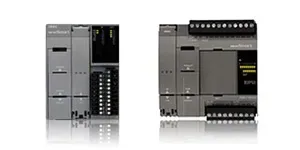
By Caleb Lara
•
February 21, 2025
Comparing PLC Types and Their Ideal Applications Programmable Logic Controllers (PLCs) come in a variety of forms, each designed to meet the diverse needs of industries worldwide. Whether you're automating a small machine or managing a sprawling industrial plant, selecting the right type of PLC is critical to achieving optimal performance. In this article, we delve into the two primary categories of PLCs—compact and modular—exploring their features, applications, and how Electric Supply Source (ESS) helps businesses integrate the best solutions tailored to their specific needs. Compact PLCs: All-in-One Solutions Compact PLCs, also known as fixed PLCs, are self-contained units where all components—including the CPU, power supply, and I/O modules—are housed in a single enclosure. These PLCs are designed for smaller-scale applications where simplicity and cost-effectiveness are paramount. Key Features: Integrated Design: Combines all necessary components into one unit, making installation straightforward. Cost-Effective: Ideal for small projects with limited budgets. Space-Saving: Compact size makes them suitable for tight spaces. Ease of Use: Simplifies setup and maintenance. Applications: Small machinery automation, such as packaging machines. Building management systems for lighting and HVAC control. Standalone systems in industries like food processing and pharmaceuticals. ESS Expertise: As a trusted PLC integrator, ESS ensures seamless installation and optimization of compact PLCs for clients requiring efficient, small-scale automation solutions. Modular PLCs: Flexibility and Scalability Modular PLCs offer a more customizable approach, with separate modules for the CPU, power supply, and I/O. These PLCs are designed to adapt and expand as industrial needs evolve, making them ideal for large, complex systems. Key Features: Customizable Design: Allows users to select specific modules based on their application requirements. Scalability: Easily add I/O modules or upgrade the CPU to meet growing demands. High Processing Power: Suited for complex automation tasks. Advanced Communication: Supports multiple protocols for seamless integration with other systems. Applications: Large-scale manufacturing plants with intricate automation needs. Process control systems in oil and gas industries. Utilities requiring extensive data acquisition and remote monitoring. ESS Expertise: ESS specializes in designing and integrating modular PLC systems, offering clients the flexibility to adapt to future challenges without overhauling their entire setup. Compact vs. Modular PLCs: A Side-by-Side Comparison Choosing the Right PLC for Your Needs Selecting the right type of PLC depends on various factors, including: Scale of the Application: For small, standalone systems, compact PLCs are ideal. For larger, complex operations, modular PLCs provide the necessary flexibility. Budget Constraints: Compact PLCs are more cost-effective upfront. Modular PLCs may require a higher initial investment but offer long-term value through scalability. Future Requirements: Modular PLCs allow for easy expansion, making them better suited for growing businesses. ESS’s Role: Electric Supply Source provides expert consultation to help clients evaluate their specific needs and choose the most suitable PLC solution, ensuring optimal performance and cost-efficiency. Applications of Compact and Modular PLCs in Action At Electric Supply Source , we’ve successfully implemented both compact and modular PLC systems for clients across various industries: Compact PLCs: Streamlined automation for small packaging lines, reducing downtime and increasing output efficiency. Modular PLCs: Comprehensive solutions for large oil refineries, integrating advanced SCADA systems for real-time monitoring and control. Advantages of Partnering with ESS for PLC Integration Tailored Solutions: We evaluate your unique requirements to recommend the ideal PLC type. Seamless Integration: Our team ensures smooth installation and configuration. Scalable Designs: Modular PLC systems that grow with your business. Expert Support: Ongoing maintenance and troubleshooting services. ESS’s Expertise in PLC Integration At Electric Supply Source , we provide end-to-end PLC solutions: Custom Design and Programming: Ensuring systems are built to meet unique operational demands. SCADA Integration : Allowing operators to manage and monitor systems with ease. Maintenance and Support: Providing ongoing service to ensure long-term system performance. Other References "Components of PLC" – Instrumentation Tools This resource provides an in-depth look at the various modules that constitute a PLC, including the power supply, CPU, and I/O modules. Instrumentation Tools "Programmable Logic Controllers (PLCs): Basics, Types & Applications" – Electrical4U This article offers a comprehensive overview of PLCs, detailing their basic components, functionalities, and applications in industrial settings. Electrical4U "What Is a PLC? An Introduction to Programmable Logic Controllers" – Control.com This piece introduces the fundamental concepts of PLCs, including their hardware components and roles in automation. Control.com "PLC Hardware Components (Explained in Plain English)" – PLC Academy This article breaks down the hardware aspects of PLCs, explaining each component's function in an accessible manner. PLC Academy "Programmable Logic Controller (PLC) Components" – Electrical Academia This resource delves into the essential parts of a PLC system, discussing their roles and interconnections. Electrical Academia
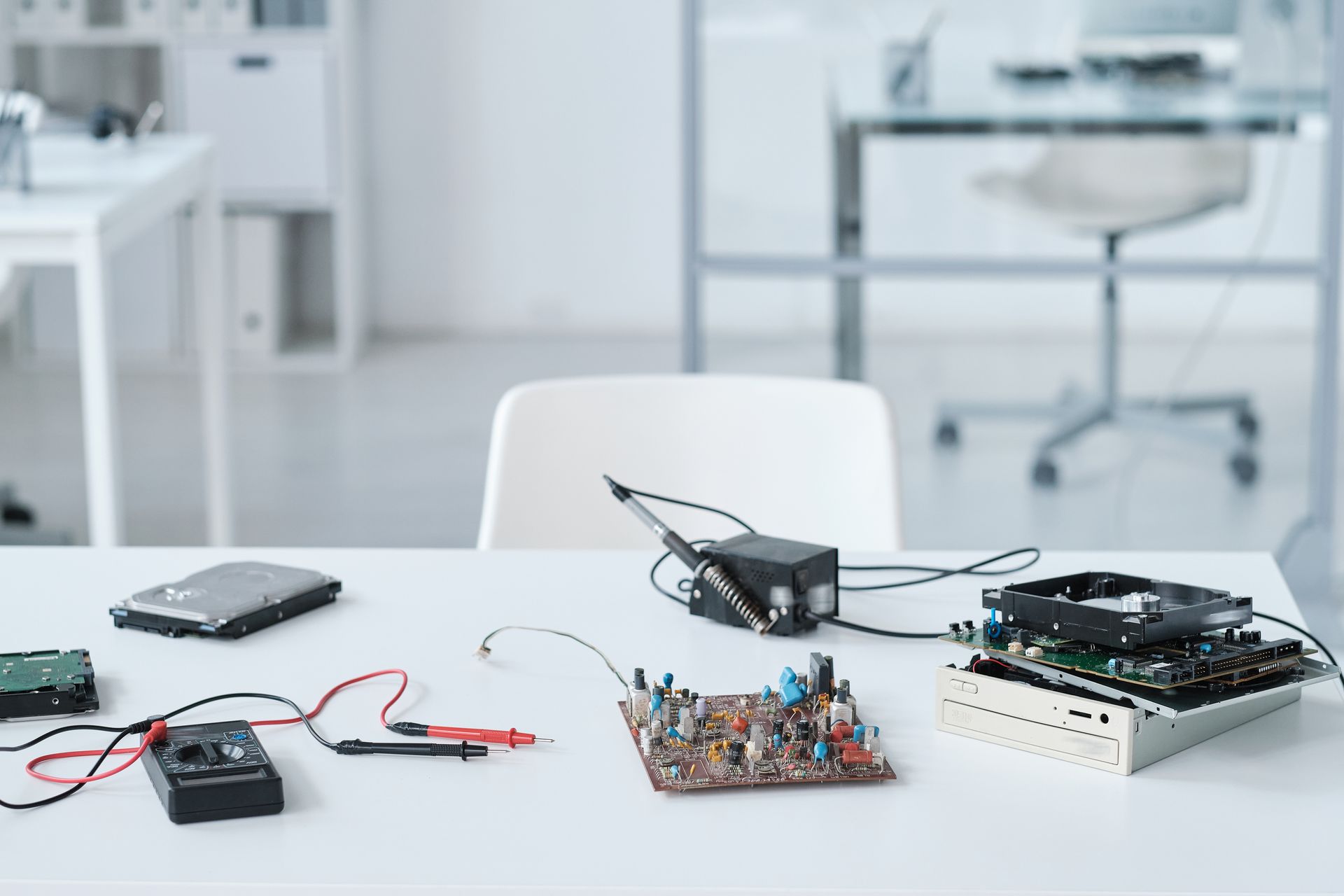
By Caleb Lara
•
January 23, 2025
Discover the essential components of Programmable Logic Controllers (PLCs), the backbone of industrial automation. Learn how CPUs, power supplies, I/O modules, communication ports, and programming devices work together to optimize precision, efficiency, and reliability in industries. Highlighting real-world applications and Electric Supply Source's expertise, this guide showcases the advantages of PLCs, including scalability, customization, and seamless integration with modern technologies like IoT and SCADA systems. Perfect for engineers, technicians, and businesses seeking to harness the power of automation for streamlined operations.

By Caleb Lara
•
January 23, 2025
Discover the power of Programmable Logic Controllers (PLCs), available from Electric Supply Source, the backbone of industrial automation. Learn how PLCs control machinery with precision, their key components, real-world applications in factories, utilities, and more. Understand why PLCs are preferred over traditional systems for their adaptability, reliability, and efficiency. Perfect for professionals and enthusiasts eager to demystify the hidden engines driving modern automation.
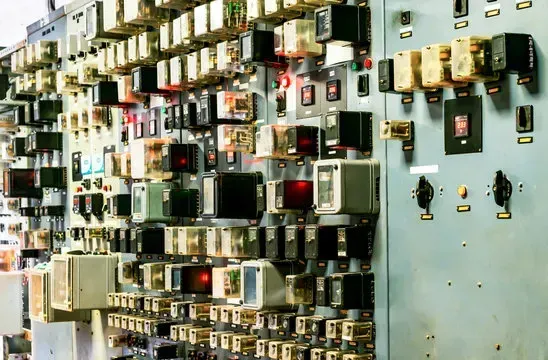
By Caleb Lara
•
January 23, 2025
From Relays to Smart Automation The story of Programmable Logic Controllers (PLCs) is deeply intertwined with the rise of industrial automation. From their humble beginnings in the late 20th century to becoming the backbone of modern manufacturing, PLCs have revolutionized the way industries operate. This article dives into the history of PLCs, tracing their development, key milestones, and the technological advancements that have shaped their evolution. The Birth of PLCs: A Revolution in Manufacturing Before PLCs, manufacturing relied heavily on relay-based control systems , which were cumbersome, unreliable, and difficult to reconfigure. These systems required extensive wiring, making changes or updates both time-consuming and costly. In 1968, a groundbreaking change occurred. General Motors (GM), seeking a more efficient and flexible control solution for their Hydra-Matic transmission factory, issued a request for a programmable controller to replace their relay systems. This initiative led to the creation of the first PLC by Bedford Associates, a Massachusetts-based engineering firm. Dubbed the Modicon 084 , it marked the beginning of the PLC era. Key Milestones in PLC Development 1968: The First PLC (Modicon 084) Designed by Dick Morley and his team at Bedford Associates. Eliminated the need for extensive relay wiring. Offered programmability and ease of reconfiguration. 1970s: Adoption Across Industries Industries beyond automotive began adopting PLCs for their flexibility and reliability. Key players like Allen-Bradley , Siemens , and GE entered the market, driving innovation. 1980s: Advancements in Software The introduction of ladder logic programming simplified the use of PLCs, making them accessible to a broader audience. Enhanced communication capabilities allowed integration with other industrial systems. 1990s: The Digital Revolution PLCs became more compact, powerful, and cost-effective. Emergence of Ethernet communication protocols enabled real-time monitoring and control. 2000s: Integration with IoT PLCs began incorporating features for smart manufacturing and connectivity. The rise of the Industrial Internet of Things (IIoT) brought advanced data analytics and remote monitoring capabilities. Impact on Modern Manufacturing The introduction of PLCs transformed manufacturing by: Increasing Efficiency: Automation reduced human error and production time. Enhancing Flexibility: Programmable systems allowed for quick adjustments to production lines. Improving Reliability: Rugged designs ensured operation in harsh industrial environments. Supporting Innovation: Integration with advanced technologies enabled more complex and precise control systems. Challenges and Evolution While PLCs have become indispensable, their journey hasn’t been without challenges: Competition from PCs and Microcontrollers: As technology advanced, alternatives like industrial PCs emerged, offering greater computational power. Cybersecurity Risks: The connectivity of modern PLCs introduced vulnerabilities to cyberattacks. Evolving Standards: Continuous updates in industrial protocols required manufacturers to adapt. Despite these challenges, PLCs have adapted and thrived, solidifying their position in automation. The Future of PLCs As industries embrace Industry 4.0 , PLCs are evolving to meet the demands of smart factories. Future trends include: Enhanced Connectivity: Integration with cloud platforms and edge computing. Artificial Intelligence: Incorporating AI for predictive maintenance and decision-making. Sustainability: Developing energy-efficient systems to reduce environmental impact. Conclusion From the first Modicon 084 to today’s advanced systems, PLCs have been at the forefront of industrial innovation. They have not only streamlined manufacturing processes but also paved the way for the digital transformation of industries. As technology continues to evolve, PLCs are poised to remain a cornerstone of automation, driving efficiency and innovation in the decades to come. Other References "The Origin Story of the PLC" This article provides an in-depth look at the inception of PLCs, detailing the challenges and innovations that led to their development in the late 1960s. Control.com "History and Applications of PLC" This resource explores the evolution of PLCs, highlighting their applications across various industries and the technological advancements that have shaped their functionality. Automation Community
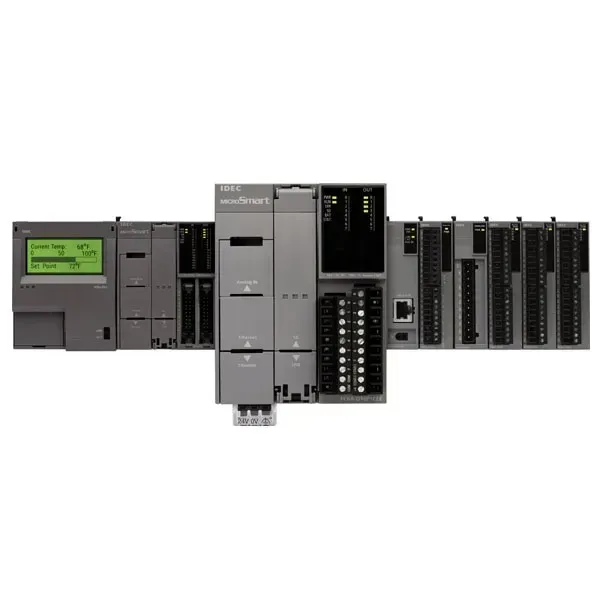
By Caleb Lara
•
January 23, 2025
Discover the power of Programmable Logic Controllers (PLCs), available from Electric Supply Source, the backbone of industrial automation. Learn how PLCs control machinery with precision, their key components, real-world applications in factories, utilities, and more. Understand why PLCs are preferred over traditional systems for their adaptability, reliability, and efficiency. Perfect for professionals and enthusiasts eager to demystify the hidden engines driving modern automation.
Electric Supply Source
3650 Buckner
El Paso, Texas 79925
Phone: 915-217-2200
Contact: Alex Sanchez

